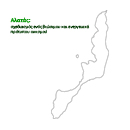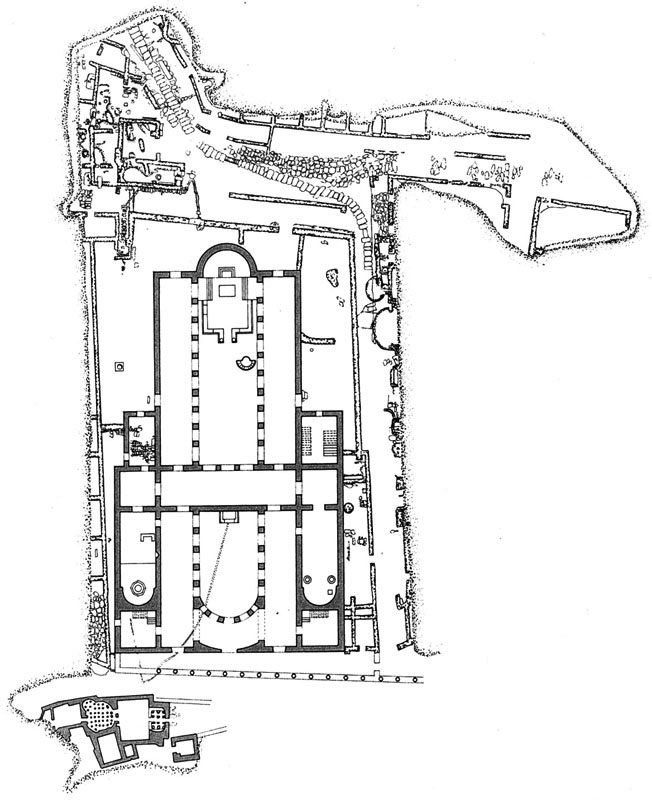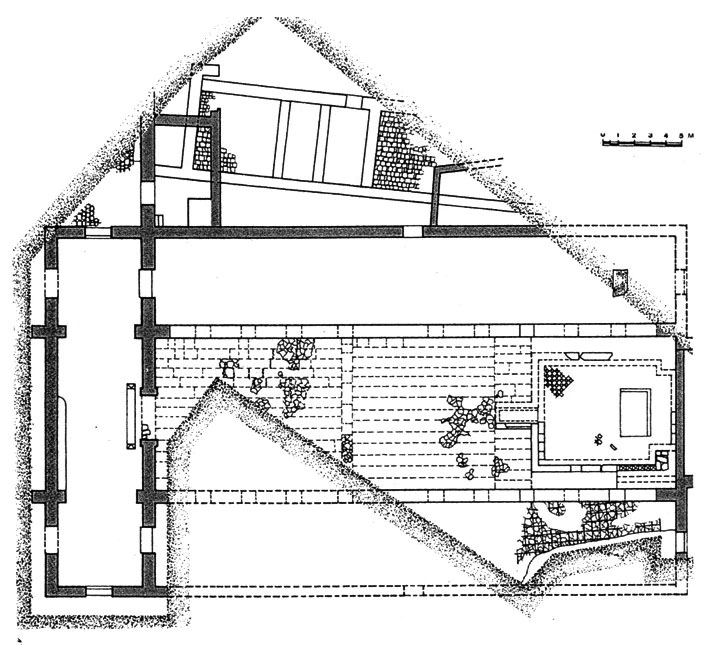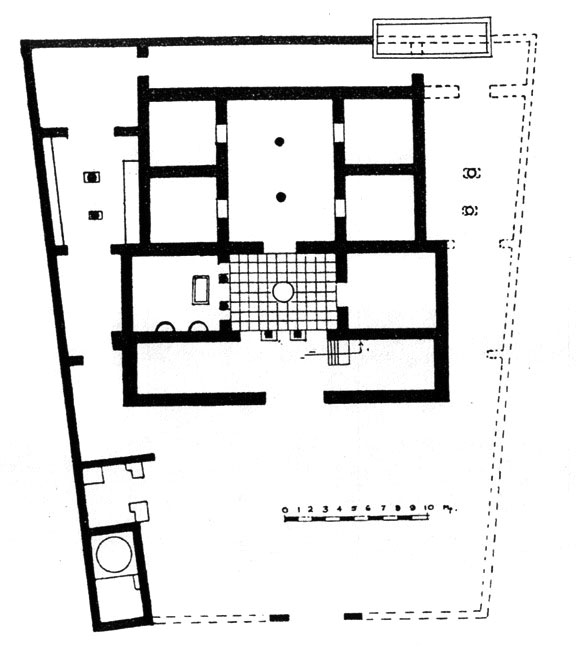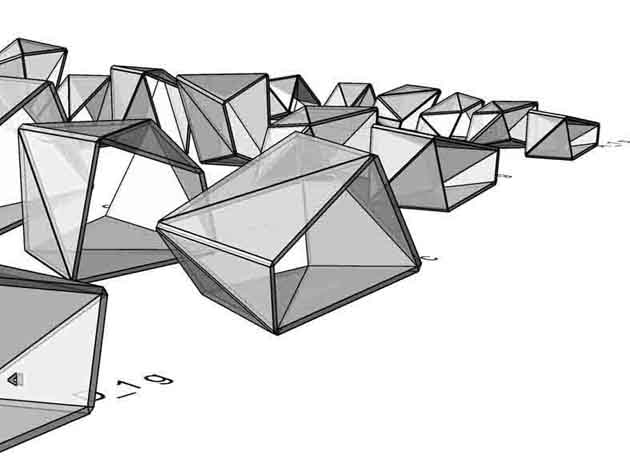

The content of this Degree Thesis is the design of a group of play installations for children of all ages, which resulted from the way children play, considering their needs and regarding their age. These installations function as a setting of a number of non predetermined activities that provide challenges and risk and in which each child can select freely how he or she will play.
The study of children’s movements by means of diagrams, the experimentation with the possibilities of designing programs and the structural trials, curried out during this exploration, determined the course of the project and led to the final results.
Vertebrae, architectural objects- play installations, are a group of octahedral units, topologically similar to one another, that receive play actions of all ages. Vertebrae can be placed freely in out-door places, alone or in groups, creating, each time, different results in space and qualities. Playing becomes a changing experiment.
As the movement of each child is unique, likewise the different geometry and size of the vertebrae, combined in a different way, makes each installation unique in shape and aesthetic.
Supervisors: Vrontissi Maria, Gavrilou Evelyn, Lykourioti Iris
Reference Number: 285


Warhol’s dream
SUMMARY
To be really rich, I believe, is to have one space. One big empty space.
Empty space is never-wasted space.
When I look at things, I always see the space they occupy.
I always want the space to reappear, to make a comeback, because it’s lost space when there’s something in it.
I believe in living in one room
One empty room with just a bed, a tray and a suitcase
Suitcase space is so efficient. A suitcase full of everything you need
One spoon
One fork
One plate
One shirt
One underwear
One sock
One shoe
One suitcase and one empty room. Terrific. Perfect.
(“Atmosphere”: “THE Philosophy of Andy Warhol (From A to B and Back Again)
The scope of this study is an object, but the goal is to space.
A big empty space. Warhol's philosophy for the area which is discussed in a chapter called "Atmosphere" included in his book: "The Philosophy of Andy Warhol (From A to B and Back Again)", creates a perfect picture in his mind about how you want be the place. Empty, free of unnecessary objects and free the owner from unnecessary demands.
He considers really rich, a person who owns a space, a big empty space.
Interpreted as lost is not the empty space, but the one containing something.
Following that he analyzes the meaning of occupation of the area and talks about the different ways that someone occupies an area. And he reaches to the conclusion that we should all live in one room. In one big empty room with a bed, a tray and a suitcase full of everything we need.
The aim of this study, therefore, is space and the smallest violation of it. It is trying to reach the magical reappearance, through an object that occupies minimum space and transforms according to what is needed.
Basis of the object is the main need of sleep and this gives its first version: the bed, the predominantly personal space. Around the minimum area of the body, thus, unfold functions to satisfy basic needs. Functions supported by a bed, a tray and a suitcase.
Answers to questions like: what is the status of the habitable? What specifies habitable? When do we really inhabit a space? When do we consider it ours? Answers to those questions may give us a new understanding of space, more general, more pure, free from limitations we obey to, often without a second thought.
The habitation of a space is driven by our needs and not by features indicated to us by every space in every room. We inhabit a space, we consider it ours, and we dictate its functions.
Supervisor: Psychoulis Alexandros
Reference Number: 312
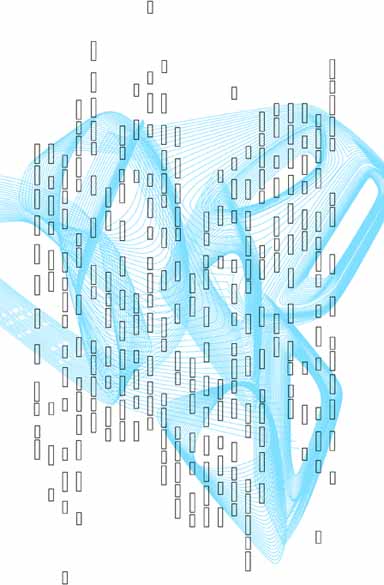

The project involves the combined design of a train station and a port at the city of Volos. It also involves the re-design and re-planning of the wharf on which the structure is plant (the existent commercial wharf). The space is utilized in benefit of the city accommodating various public activities as hotel, conference center, office.
An important part of the composition is the big open space which is a section point between the park blocks of the city hall area and old station area, and divides the building horizontally, creating two separate zones. The station zone and the the one less public, which accommodates the conference hall and the office space, while the hotel is situated on the torsion of the open space plan (where it turns to convert into the building’s roof).
During the research, it was discovered that most of the modern European stations tend to gather a combination of transport, such as train, underground, ship, etc, aiming the reduce of the travel time and the convenience of the passengers. Furthermore, regarding the city of Volos, it favors the unification of the city center with the old city and creates park space and potential development westwards.
Morphologically and structurally, the design affiliates organic pylons into an orthogonal volume without breaking it apart. They serve the vertival movement inside the building, the illumination, in some case activities (exhibition space, amphitheater), but at the same time they constitute the main building structure.
Supervisors: Triantafillidis Giorgos, Daskalakis Konstantios
Reference Number: 300
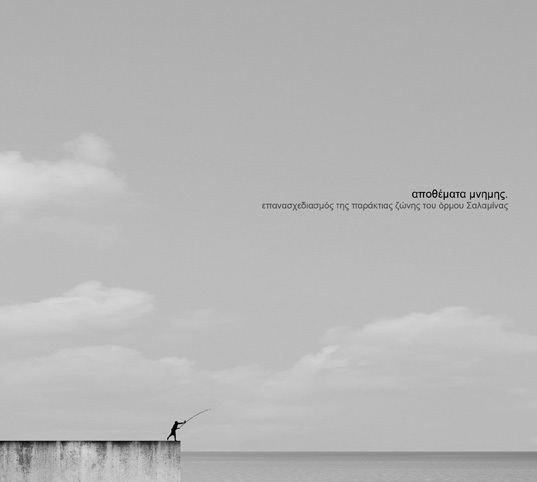

This thesis is about the regeneration of the waterfront in the center of the island of Salamis. Keeping the existing uses (fish market, playground, cafeteria, parking and municipal dock events) and adding some more (cinema, walking park, a museum of small vessels), this is an attempt to renegotiate the boundary of the coastline and the transition from city to sea. The aim therefore of this diploma is to create a bright relationship between the "natural" and "artificial" - the sea and the city respectively, and the activation of the coastline making it as the most vibrant and vital public open space in the city. Recalling passages and traces the coastline of 1971, 1984 and now (as reflected by aerial photographs of each period), creating a route over the coastal belt, which hosts the uses listed above.
Supervisor: Trova Vasso
Reference Number: 289
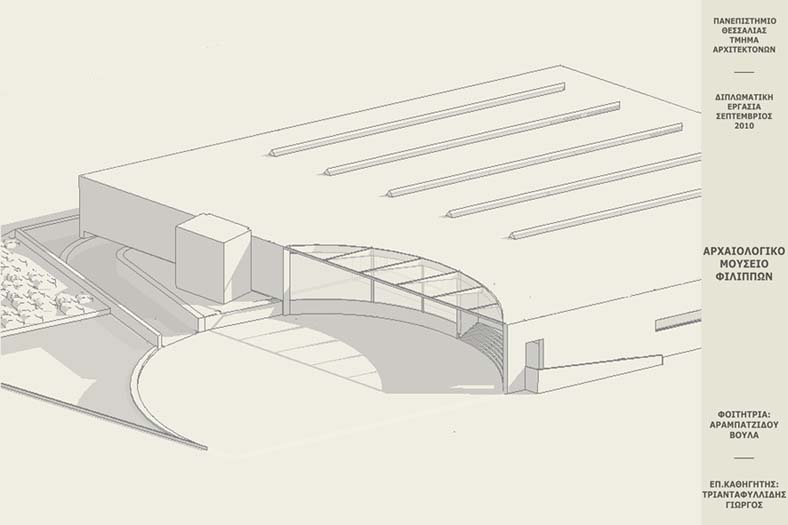

The theme of this thesis is the design of the new 'Archaeological Museum of Philippi, in the capital of this municipality, Krinides of Kavala. With characteristically monuments of Greek, Roman and early Christian period, the archaeological site of Philippi is one of the largest in Greece. The ancient theater and other architectural ensembles preserved as well as the Festival of Philippi make the area popular and highly visited. The findings from the excavations are kept in the Museum of Philippi and some of them are displayed but the building itself due to the number of the discoveries coming to light continuously from excavation works and other problems can no longer respond to this need.
The main objective of this work was firstly the design of a simple and functional museum with all the necessary infrastructure, in harmony with its surroundings. Furthermore, by the designation and architectural program to create a broader cultural center that brings additional activities in the region. The land on which the proposal is applied is, a region with several other uses, is designated by the archaeological area, the village's main street and is substantially the entry of visitors to the archaeological site. The reason for the conception of the museum was firstly its proximity to the ancient theater where the ‘reading’ of its parts made in terms of a visitor’s movement. The shape of the plot itself, the surrounding axes and access points also acted as a guide to make the basic form.
Thus, the museum consists of two levels with the main exhibition, periodic exhibitions and the cafe to be at the top level while the second basement has some auxiliary functions-receiving area, warehouses, laboratories, offices- and a part of which that communicates with the upper level, has some public space –library/archive and amphitheater. The skeleton of the building consists of concrete plates and a grid of columns while the walls are laid out by marble plaques (skra tavernitis). The building rises from the ground(1.5m) to provide light to the lower level through a perimeter corridor while the lighting of the exhibition is made by roof slots and an opening on the east side. The exhibition area (5m height) is separated by walls (0.8 cm), perimeter and diagonals transit corridors in four rooms in chronological themes. The entrance of the building and surrounding area is designated by a circular small square paved with stones where archeological findings are displayed in bases. To the left there is a low container with water and more bases, a low seat and finally the landscape is completed with piled large local stones. Finally comes a redesign of the lawn area surrounding the site and is added some parking spaces.
Supervisor: Triantafillidis Giorgos
Reference Number: 297
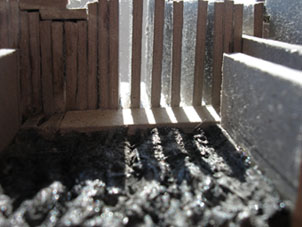

The district of Evangelistria is a renown central area of Thessaloniki. It consists of a large number of apartment building units mixed within an area of various activities neither not well integrated within the surrounding urban fabric of the city. In fact, many of the activities are of a different character to the land uses of the urban network. The area (neighborhood) also incorporates places of collective "cultural memories" pointing out the long periods of its habitation. In spite of its fairly interesting character and sites, the area is still difficult to access or attract, thus forming an urban "enclave" within the urban network. The dominant elements of this place correspond to layers: "horizontal" (stops, old graves) and "vertical" (movement, Walls) and converse through the movement: In essense, I construct ways, while incorporating stops and passages and forming relationships:
Within the notions of stops, movement and passage, the main scope is to:
• attach new land uses in the area
• enhance the local aspects of the units
• make minimal interventions
• create a new local street network
• open minor passages
• define new 'meeting places'
My aim is firstly to change the character of the district of Evangelistria from a recreational place to a park of culture and "thinking" and, secondly, enhance the area's status by disclosing civic passages, connections and intercepting aspects. The idea for the area is to maintain its identity while 'keeping some of its urban secrets'. We promote planning without missing links and (without) erasing the previous character. The "spirit" of every small place is kept. There are various uses and settlements and some of them are "covered" or "wide open", well-lit or kept-in-the-dark, calm or noisy, deserted or crowded, linear or complex. The place of the old cemeteries were treated as cultural elements of the city. By this means, we show our respect to the city's history throughout the centuries. Some of the district's sites were chosen as main passage places through the old city's Walls. The main streets have vanished and new land uses are given to the existing buildings. Some of the old structures are demolished. As a result, we attain "free neighborhoods" and influence the relationship between built and non-built environment. Tree-lines and green ways are conserved and, by the same token, new tree-covered areas are planned.
Supervisors: Fyga Dimitra, Dallas Alexis
Reference Number: 273


